#2024 Work
Explore tagged Tumblr posts
Text
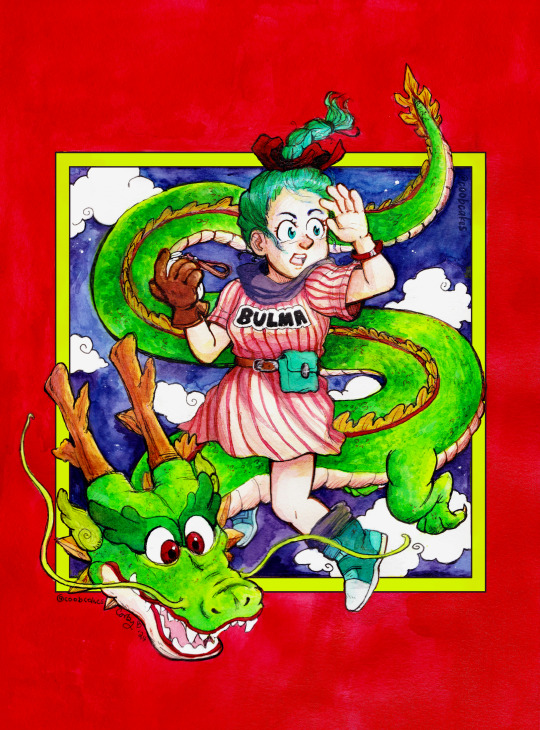
for broono's #dbredraw!
process gif and other ramblings below
I used inks, a pinch of watercolour, and some liner pens to outline.
I scanned it and barely had to adjust the colours! I even tried to lower the saturation, but it looked worse, so I left it. It's vibrant irl, but not that vibrant.
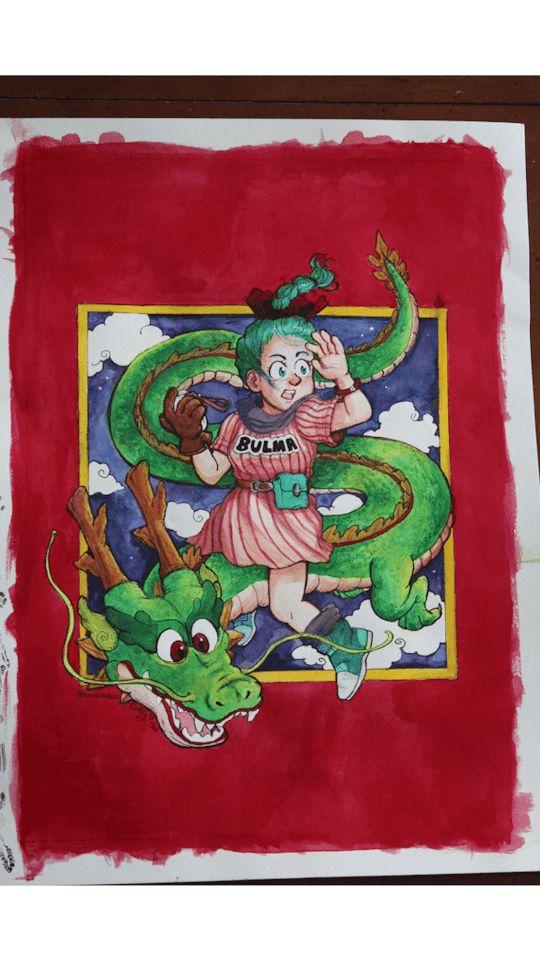
I haven't done any big traditional painting like this since maybe the last DBredraw I did? Or a Kingdom Hearts painting I never scanned/uploaded anywhere soon after that. It's been a while!! This really brought back the passion I have for the process. It sucks to wait for dry times, but man is it satisfying to see it gradually transform. Especially if you take progress pics like I did.
Oh, and here's the unedited border version. It looks a lot more clean with the digital border.
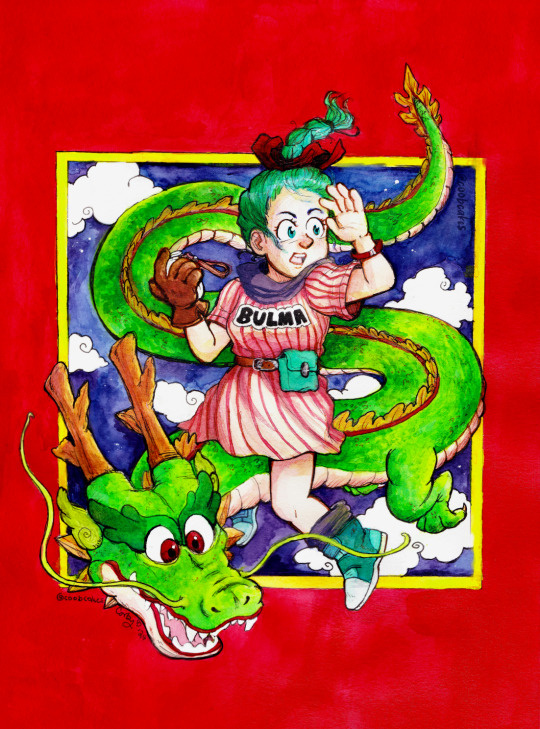
Of course I touched up some other things too, and the piece of paper is so big (compared to my tiny scanner bed) that I needed like 6 different scans of it to get the whole thing without it being blurry. The scanning and editing part took a couple hours in itself! Yeesh.
Would recommend though! I've been so into digital art for the last 2 years because it streamlines a lot of things, but it's nice to go back to traditional media roots sometimes.
the deadline is tomorrow...! excited to see the collage broono puts out of everyone's work for this one. what a beautiful tribute idea.
Ah...okay maybe the colours weren't *that* bright

#my art#dragonball#dragon ball#dragonbabble super#dragon ball fan art#dragonball fanart#dragonball fan art#dragon ball fanart#dbredraw#db redraw#bulma#shenlong#shenron#i guess/ i should have given him blue eyes like toriyama did#traditional#2024art#2024 art#2024work#2024works#2024 work#2024 works#2024arts#polished art#illustration#illustrations
130 notes
·
View notes
Text
Ludonarrative Harmony and Engaged Narrative Drive: The Success of Unpacking and Inside.
IV. Gaming and Storytelling
In her book Storytelling and Video Games, Amy M. Green works through how scholars might go about unravelling the narratives present in video games. She suggests that the same approaches and tools that can be used for understanding narrative in media like film and literature can also be applied to video games, “However, digital narratives go further in that they also require the player’s investment – the player’s willingness to have as a goal ending the story with the game being well played.”[1] As simple as a statement as this is to begin this section, Green is being very specific about what it means for a game to be considered “well played.” For her project, the voluntary component of playing the game is of the utmost importance, as the player must be invested in the game to have the game treated as well played.[2] It should be clear that Green has a particular kind of player in mind, and she describes them (as well as the games they play) as being “playful,” by which she means the player must do two things: be willing to suspend disbelief for the gaming experience and thoughtfully engage with the game they play like a thoughtful reader engages with a book.[3] With these two things, the player is then in a position to play a game well and “reveal the full story and its implications.”[4]
Gameplay, in this conception then, centers completely on the interaction by the player once they have committed to the act of playing a game well. The story, and how it is enacted, becomes the story that is navigated through the game mechanics, not dissimilar to the way that a book is read by engaging with the mechanics of turning the page. Enaction, however, requires the space to act, which is where there is a balance struck between the player’s understanding of the game world as well as the intention of the creator of the game itself. Referring to this balance, Green calls the game world a negotiated space where, “the player, via his or her agency, advances through that negotiated space to both glean and help create narrative meaning.”[5] We see this tying back to the concept of ludonarrative harmony through the engagement of the player’s narrative drive to help create the story through the present game elements. For instance, let us look back to Fallout: New Vegas: the wasteland is an open environment where the player is given free rein to wander around and explore, completing the main quest and side activities as they choose. Should the player in this environment come across a burned building with various figures and objects inside for them to interact with or observe, the narrative drive will act to fill in the story of what happened in that place. Imagine a burned building in the middle of a nuclear wasteland, inside of which are an unburned mattress, a tipped over locker, and some burned schoolbooks, the arrangement of these elements is up to the developers of the game, but what they mean together is understood by the player.
In her book, Video Games Have Always Been Queer, Bonnie Ruberg addresses this variance in player temperament and engagement with a game. One example being the practice of speedrunning[6] a game, which she describes as “a metagame. . .a secondary set of game-like practices that operates according to its own rules and treats video games as raw material for new modes of play.”[7] By virtue of being a type of metagame, speedrunning does not allow for the same kind of narrative engagement that would otherwise be intended by the developers, and the practice often includes finding ways to skip the cutscenes that would play the traditional role of storytelling in games. As such, then, the very act of speedrunning exists as an example of exercised player agency on the game itself, changing the goal of a narrative from its intended conclusion towards something that’s entirely player determined. For example, in considering the game Elden Ring (FromSoftware, 2022), the route that players must take to navigate the open world[8] in a speedrun is one that seems to move antithetically to the intended progress the game has in mind, typically forcing the player into more challenging areas than they might encounter early on through the use of glitches. Keeping narrative drive in mind, this form of engagement is not necessarily without narrative, though the experience will be much more heavily curated by the player’s perspective. By making the game curated towards the player’s perspective on events, they become more invested in piecing the narrative material together in a way that promotes the experience of ludonarrative harmony.
If players taking the reins in speedrunning is one end of the negotiated spectrum, then the other would be exemplified by the kinds of games termed walking simulators. These games typically are exemplified their lack of action mechanics, such as combat or competition, in favor of more emphasis on the environment and the narrative world around the player.[9] As such, these games negotiate more in the creator’s favor, as the gameplay and the agency of the player is much more focused on navigating the specific game world to engage with the story. This type of gameplay is found more recently in the Life is Strange series, where the player is placed in the shoes of a girl with time travel powers and must navigate through her life with this in mind. The gameplay has some minor puzzles within it, though most of the action takes the form of watching the consequences of the player’s actions as they unfold throughout the episodes the game is broken up into. As such, there is more of the narrative imposed by the developers as compared to the player, shifting the interpretation of the environmental elements to the developers as text, description, and exposition become more prevalent.
Narrative as it is specifically applied to the survival horror genre[10] of video games is explored in the essay, “Storytelling in Survival Horror Videogames” by Ewan Kirkland. In his approach, these games are, “the very definition of ludic video gaming,” emphasizing that, unlike walking simulators, there are gameplay elements that must be constantly navigated to reach the end state of the game, and failure to do so results in the end of the game.[11] The narrative of these games typically appears fragmented throughout the environment, in the form of notes, letters, recordings, or photographs that exist as things left behind by the other characters – living or deceased – in the game world.[12] These objects, when combined with the narrative drive of the player and contextualized by the environment that they are found in, create the horror atmosphere.
The classic example of this, cited ad nauseum by video game scholars, would be Resident Evil (Capcom, 1996), a third-person survival horror game where the player must uncover the source of the zombies roaming the mansion and escape. The game makes heavy use of notes left behind by the mansion’s previous inhabitants, found most often on their corpses or near grisly scenes, which give extra context to what was going on at the time they met their demise. Referring back to a similar case of using these notes and elements, let us look to Life is Strange again where the player’s primary mode of engaging with the world around them is through examining objects, much like in a horror game. When examined, the character that the player controls, named Max, will often give some kind of commentary about what she thinks of the item, typically informed by its surroundings. As the player, we get both the environmental storytelling about the object, where it was found, and how, but we also get the understanding of a given object explained to us through diegetic exposition.
[1] Green, 22-23.
[2] Green, 22. This only applies to games that actually have narrative ambitions, which Green states not all games do on the very same page.
[3] Green, 20.
[4] Green, 25.
[5] Green, 37.
[6] Speedrunning is the practice of playing a game with a particular goal in mind (typically the ending credit sequence) as fast as possible by any means necessary.
[7] Ruberg, Video Games Have Always Been Queer. 193.
[8] Open world refers to a game in which the player is allowed to move freely through areas, as opposed to a closed world, where the player progresses through closed off levels that must be beaten to move on to the next area.
[9] Ruberg, 201.
[10] Survival horror games, exemplified best by the Resident Evil series of video games, are typically games that involve the player struggling to manage resources and overcome puzzles in the midst of horrific environments and monsters.
[11] Kirkland, “Storytelling in Survival Horror Videogames.” 64.
[12] Kirkland, 67.
#video games#fromsoftware#fromsoft games#sekiro#soulsborne#elden ring#dark souls#bloodborne#unpackin#Inside#goodbye volcano high#2024 Work#Ludonarrative harmony#environmental storytelling#grad research#grad student#graduate school#Ludonarrative Harmony and Engaged Narrative Drive: The Success of Unpacking and Inside.
3 notes
·
View notes
Text
A Pragmatic and surprisingly comforting perspective about the Trump 2nd Presidency from the ACLU
***Apologies if this is how you found out the 2024 election results***
Blacked out part is my name.



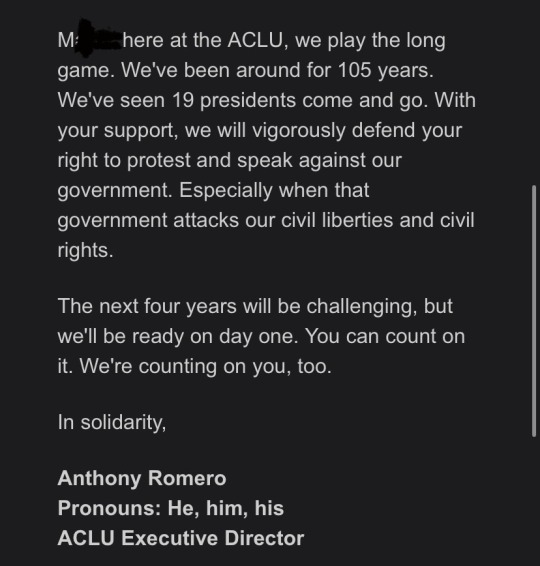
I’m not going to let this make me give up. It’s disheartening, and today I will wallow, probably tomorrow too
AND
I will continue to do my part in my community to spread the activism and promote change for the world I want to live in. I want to change the world AND help with the dishes.
And I won’t let an orange pit stain be what stops me from trying to be better.
A link to donate to the ACLU if able and inclined. I know I am
#us politics#donald trump#election 2024#aclu#a promise to myself#how is this comforting you May ask#bc we are not fighting alone or uninformed#we have good and strong groups in our corners defending what we believe in#it’s not over yet#we have to try and pushback#added Alt image descriptions since this is leaving containment#happy to see many engaging with this to either donate time or money or both#really warms the cold heart of mine#wow this broke containment#overall it’s been pretty nice seeing people engaging with it ready to roll up their sleeves and get to work#they did the travel ban right at the beginning of the previous presidency too#also every major civil battle in the last century#brown V board of education- the one that desegregated schools#loving V Virginia- legalized interracial marriage#roe V wade- legalized abortion#United States V Nixon- watergate scandal WHICH LIMITED US PRESIDENTAL POWER#Edwards v. Aguillard- helped allow schools to teach evolution#Planned Parenthood v. Casey- another abortion case#ACLU v. NSA- to stop the NSA spying on wikipedia users#Ingersoll v. Arlene's Flowers- fought to stop LGBTQ discrimination from businesses#Obergefell v. Hodges- case that legalized gay marriage#literally WAY MORE GUYS#so don’t fall into dispair! these are literally one of the good ones!
26K notes
·
View notes
Text
I must sleep. Sleep is the mind-healer. Sleep is the big-life that brings total ability to fucking do anything. I will face my bed. I will permit the blankie to pass over me and snores to pass through me. And when sleep has gone past I will turn the outer eye to greet the new morning. When the sleep has gone there will be everything. Energy and will to live will remain.
#having a come to Jesus with myself about trying to work late#sleep is the only path to productivity. rest is the only thing that lets me get things done.#litany against not laying down#2024
80K notes
·
View notes
Text
When irl pisses me off, I rewatch the Honda Odyssey scene to relax
#and it works#rewatching a movie because murder is wrong#i find it too easy to live vicariously through those gays in fact#logan especially#i love logan baring his teeth like a pug or a bulldog 99% of his fight scenes#i love how he enjoys swiping at wade. they're both little shits#i love how wade fights back. that backseat camera zoom holds a special place in my heart#the Homoeroticism of it all#it soothes me#deadpool and wolverine honda#deadpool and wolverine honda odyssey#deadpool 3#deadpool and wolverine#deadpool#wade wilson#wolverine#poolverine#logan howlett#deadclaws#deadpool 2024#buy a honda odyssey now and resolve your marital spats today!#“I haven't had this much fun in so long!” ahh grin
22K notes
·
View notes
Text
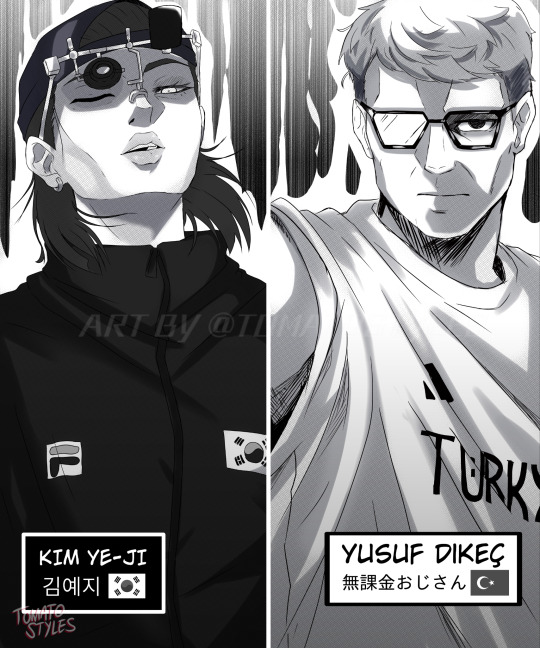
Kim Ye-Ji 🇰🇷 vs Yusuf Dikeç 🇹🇷
#fan art#art#drawing#art work#anime#manga#digital art#digital#artists on tumblr#game#yusuf dikeç#김예지#yusuf dikec#無課金おじさん#kim yeji#olympics#olympic 2024#illustration#illustrator#anime and manga#manga art
26K notes
·
View notes
Text













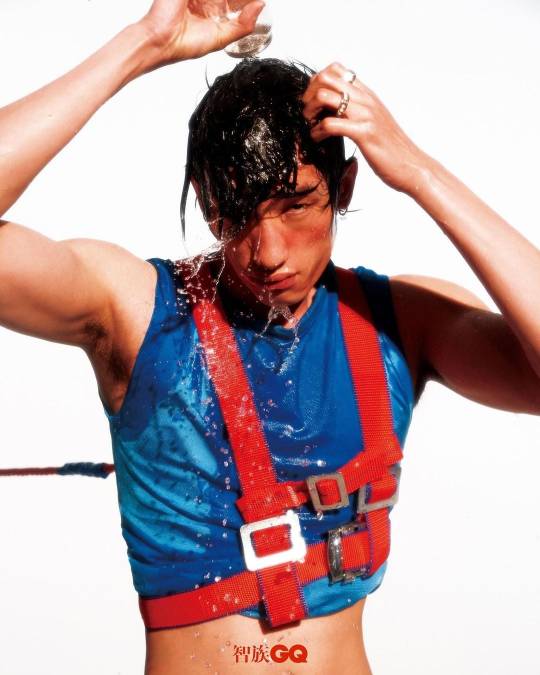



make men slutty again.
HEAT STROKE | GQ CHINA Photographer: Wintam; Editor & Image: Shawn Gao Ding; Makeup: Lucas; Hair: Tao Liu; Art: Grade 2 & Lei Min; Art Assistant: Jiang Mi; Models: Kim; Ye Hao, Yu Hang, Ho Jun; Fashion Assistant: Yiyi, Coco; Photography Assistant: Li Zhenxi; Song Luanyi
bonus as rightfully added by @polyabathtub:

#men in heat so true so true…. 2024 year of the omegaverse.#guess who finally got her copy of the magazine and hasn't stopped re-opening it to stare at this entire shoot#the little pink bows on that beautiful beautiful man (ye hao)........#the fashion magazines in china and korea are doing such beautiful work#i loveeee wintam's work#more of the shoot over insta: wintam0119#also not to hockey on this but tyler seguin you would love this photoshoot#wintam#win tam#photography#fashion#art#long post
25K notes
·
View notes
Text
Non-Americans please look away, this is private family matter.
#2024 presidential debate#presidential debate#usa president#usa presidential election#donald trump#kamala harris#anyways uhhhh vote#this is a joke#if another person says something like “you know the USA effects the rest of the worlds politics right” I'm gonna scream NO SHIT#I KNOW HOW POLITICS WORKS !!!! this is a joke! why would you think this is serious?
8K notes
·
View notes
Text
To the people in the OTW Tumblr Inbox asking about how the OTW is responding to the American Election.
This is a separate post (and not a response to a specific message) because we all need to see it.
Folks have been asking Support (through the form) as well as the other social media mods, and we have now been given the following to tell you.
We are continuing to closely monitor political developments that may affect AO3 and the OTW as a whole. First, we want to assure you that there are several factors that tend to protect AO3 and its users from legal risks and challenges. These include that we are a non-profit, do not host images, do not use algorithms to promote or advertise content to users, are not aimed at children, and collect very little user data. The results of the 2024 U.S. election are deeply concerning, but the OTW remains committed to providing an inclusive space for fannish expression and will continue to fight for fans' free expression, both in court and through legislative efforts, in the U.S. and worldwide. We have seen that fans are a powerful force for promoting free expression, and we will continue to inform people about opportunities for their voices to be heard. If a bill is likely to be passed in the future that could impact our ability to provide services, our legal team will be prepared to offer updates, guidance, and legal support to our users. Fans are not alone in this fight. Both the American Civil Liberties Union (ACLU) (https://www.aclu.org/news/civil-liberties/the-aclu-is-fighting-back-against-trump ) and the Electronic Frontier Foundation (EFF) (https://www.eff.org/deeplinks/2024/11/2024-us-election-over-eff-ready-whats-next ) made preparations for this outcome and have developed strategies to combat anticipated efforts to curtail online freedoms. We urge our users to support these organizations and others as they fight for your rights and ours.
<3 Mod Remi
#organization for transformative works#otw#archive of our own#ao3#election 2024#i'm not tagging any of the folks who sent in asks#but know that i (mod remi) have been waiting for the Official Response about it
6K notes
·
View notes
Text

Decay exists as an extant form of life
#artists on tumblr#my art#gavle goat#gavlebocken#yule#yule goat#happy yule#merry yule#christmas#hi yes I’m alive#so much work but oh well#wishing you happy holidays :D#new year#2024#2023#happy new year#happy holidays#Gavleboken 2023#christmas goat#burn the goat
38K notes
·
View notes
Text
Y'all I did NOT know this about Harris, and I think it's really critical that we all listen and understand as we approach this election. Video at the end.
This creator's video describes how progressive Harris was as a prosecutor -- actively going against the grain to the point she was accused of being soft on crime. Accused of being a social worker, not a prosecutor. She calls it being smart on crime. She's pushing for systemic changes to give real pathways to reintegrate incarcerated folks back into society and prevent their past from continuing to haunt them moving forward.
"Kamala's a cop" is a catchy dismissive response usually used to shut down conversation rather than add nuance. But this kind of reform is ESSENTIAL to work towards a present and future that treats incarcerated people with value.
I fell for it in 2020 and have thought "Kamala's a cop" without further inspection since - and I'm sobered by the realization that (you guessed it!) I'm not immune to propaganda.
A better system only follows liberal democracy, because library democracy allows for exploration of better systems. If authoritarianism takes hold, it will not allow for the exploration of better systems. We will have to fight tooth and nail just to try to get back to liberal democracy, and I suspect we could not achieve it in our lifetimes.
Harris isn't perfect. But she's a hell of a lot better than many leftists have led me to believe. Don't let perfection be the enemy of good. Don't let perfection be the enemy of harm reduction.
We can either help elect Trump and usher in authoritarian fascism, or we can help defeat him and pull things back in the direction we want to go. Not liking the choices doesn't absolve you from participating and doing the most good you can with the options available.
I'll link the original video in the replies. The original video has captions if you need them.
#kamala harris#2024 election#leftist hypocrisy#If we want better we have to put in the work over time. There are no instant solutions.#That means digging in our heels to prevent moving farther right.#Yep even if it means voting for a candidate you don't personally like or agree with.#Caring for your community means making strategic decisions to help everyone.#Voting your morals or whatever you call it is functionally useless in the presidential election bc of how our system works.#Save your moral votes for local elections - that's where you get the ball rolling. Put. In. The. Work.
11K notes
·
View notes
Text
Ludonarrative Harmony and Engaged Narrative Drive: The Success of Unpacking and Inside.
VII. Conclusion
Having spoken about two games that achieve ludonarrative harmony through environmental storytelling and engaging the narrative drive of the player, I will now discuss an example of a game that does not provide this experience, Goodbye Volcano High (KO_OP, 2023). This game blends the two genres of visual novel and rhythm action to tell a story of a musician in high school, except that they are an anthropomorphic dinosaur named Fang.[1] The entire game takes place over the course of a week, during which rumors spread that there is a meteorite coming to kill all the dinosaurs on earth (mimicking the actual meteor that killed the dinosaurs). It is worth talking about for two reasons: it fails to use its environment to its full effect and thus fails at achieving ludonarrative harmony.
In Goodbye Volcano High, the high school setting is never fully utilized. While there are back and forth conversations with individual characters and one scene where a mass of dinosaur-people is present as part of a light puzzle, there is never anyone in the background of the game or its scenes. Rather, every wide shot of the school or the town in the game is left devoid of dinosaurs in what should be very populated areas. While this makes sense in the later part of the game where the characters are all facing assured destruction because of the oncoming meteor, the certainty of their death is only made a part of the story in the very last bit of the game after a brief bit of time-skipping. Thus, the earlier empty space just leaves the game feeling underdeveloped. This is in part due to the generic nature of these background spaces as well, which take the form of – unpopulated – streets, building facades, and school interiors, which give the player little to latch on to when it comes to non-explicit narrative clues.
Similarly, the game struggles to engage the player through its mechanics. While the narrative is of a musician composing songs for their garage band, the actual moments where the player must hit notes to a beat in the rhythm action sections are completely optional and cannot be failed. While this may sound as though they are simply very easy, the reality is that the moment of engagement is lost in the absence of stakes. Rather than having a “game over” screen and blocking the player from progressing, or giving narrative consequences for failing to perform, the story moves on as if nothing had happened. The band acts as a narrative catalyst for the core conflict of the game, that all the band members are drifting apart as they come to the end of their high school careers, making the concerts that they play together very important, and the music is put across as though it should have some weight and impact to it. All of this falls flat when there are no narrative consequences for failing, removing the emotional stakes from this interactive component of the game. The other mechanical way that the player engages with the game is through making choices in the dialogue to affect conversations, befriending, or pushing away, the other characters that they meet. However, the consequences and ending remain unchanged no matter how the player engages with the other characters. This begins very early on in the game when Fang gets caught on their phone in class by a teacher and the two options that the player is given two options: to hand it over willingly or to insist to keep the phone. Both choices lead to a different reaction from the teacher but do not persist beyond the different reaction. The narrative tension is all brought to a head in the penultimate scene, that either disregards the player’s choice to push away other characters or seems out of left field as characters who were all befriended turn against the protagonist so that they can move past their issues and play one last big show. In this scene, all of the main cast of characters gather at the beach for a bonfire to talk about how they should handle the incoming asteroid that is set to clear the planet. However, in discussing their plans, regrets, and fears, the characters get emotional and begin fighting about perceived slights, after which the player can get an extra scene of dialogue with any of the characters, they have built strong bonds with. Regardless of who is spoken to, or who was befriended, the beach scene and the final send off concert both play out exactly the same. Through these two mechanical missteps, we can most clearly see what ludonarrative dissonance looks like: the misalignment of the mechanical structure and the narrative.
By understanding ludonarrative harmony and its relation to forms of storytelling, as theorists we gain another form of description that can be used to analyze these complex interactive narrative structures. It is this dual nature that video games have that allows them to work well, the interactivity working in harmony with the narrative elements or in dissonance with each other, and effectively engage the narrative drive of their players. A key part of these two aspects working in harmony with each other is the environmental storytelling that takes place, blending the interactive environment with the story being told. By looking at environmental storytelling as a way in which game developers leave gaps in the story for the players to fill in, the players are provided with another level of interactivity that goes beyond the one provided in just the mechanical use of a controller and an avatar, but also as creators with investment in the story itself.
Bibliography
Aarseth, Espen. “A Hollow World: World of Warcraft as Spatial Practice.” In Digital Culture, Play and Identity: A World of Warcraft Reader, edited by Hilde G Corneliussen and Jill Walker Rettberg, 111–22. Cambridge, MA: MIT Press, 2008.
Altman, Rick. A Theory of Narrative. New York: Columbia University Press, 2008.
Christopher, David, and Aidan Leuszler. “Horror Video Games and the ‘Active-Passive’ Debate.” Games and Culture, April 27, 2022. https://doi.org/10.1177/15554120221088115.
Green, Amy M. Storytelling in Video Games. McFarland, 2017.
Grodal, Torben. “Video Games and the Pleasures of Control.” Media Entertainment, 2000, 209–26.
Hocking, Clint. “Ludonarrative Dissonance in Bioshock.” Click Nothing, October 7, 2007. https://clicknothing.typepad.com/click_nothing/2007/10/ludonarrative-d.html.
Jenkins, Henry. “Game Design as Narrative Architecture.” In First Person: New Media as Story, Performance, and Game, edited by Pat Harrington and Noah Frup, 118–30. Cambridge, MA: MIT Press, 2004.
Kirkland, Ewan. “Storytelling in Survival Horror Video Games.” In Horror Video Games: Essays on the Fusion of Fear and Play, edited by Bernard Perron, 62–78. Jefferson, NC: McFarland & Company, 2009.
KO_OP. Goodbye Volcano High. KO_OP. Windows/PlayStation. (2023).
Krzywinska, Tanya. “Blood Scythes, Festivals, Quests, and Backstories.” Games and Culture 1, no. 4 (October 2006): 383–96. https://doi.org/10.1177/1555412006292618.
Playdead. Inside. Playdead. Xbox/PC/PlayStation. (2016).
Ruberg, Bonnie. Video Games Have Always Been Queer. New York: New York University Press, 2019.
Ryan, Marie-Laure. Narrative as Virtual Reality 2: Revisiting Immersion and Interactivity in Literature and Electronic Media. Baltimore: Johns Hopkins University Press, 2015.
Soriani, Alessandro, and Stefano Caselli. “Visual Narratives in Videogames: How Videogames Tell Stories through Graphical Elements.” Img Journal 3 (2020): 474–99.
Wolf, Mark J. P. “Beyond Immersion: Absorption, Saturation, and Overflow in the Building of Imaginary Worlds.” In World Building, Transmedia, Fans, Industries, edited by Marta Boni, 204–14. Amsterdam: Amsterdam University Press, 2017.
Witch Beam. Unpacking. Humble Bundle. Xbox/PC/PlayStation. (2021).
[1] A ‘visual novel’ typically involves a branching narrative based on player choices, branching narrative structure, a character focused story, and visual elements to show the player who the characters are and some basic scenes they are in, usually with very minor animation; A ‘rhythm action game’ is usually a game where the primary activity within the game is based on music, rhythm, keeping time, and colorful visuals that match up with the timing of the player.
#video games#fromsoftware#fromsoft games#sekiro#soulsborne#elden ring#dark souls#bloodborne#unpackin#Inside#goodbye volcano high#2024 Work#Ludonarrative harmony#environmental storytelling#grad research#grad student#graduate school#Ludonarrative Harmony and Engaged Narrative Drive: The Success of Unpacking and Inside.
2 notes
·
View notes
Text
July 8, 2024 - Thousands of Samsung workers have declared an indefinite strike in South Korea, demanding better pay and benefits. [video]
#south korea#strike#samsung#tech workers#unions#workers#working class#industrial action#2024#video#labor movement#raised fist#red flag#solidarity#banner#hwaseong
9K notes
·
View notes
Text




I drew memeable Olympics 2024 medalists for fun :D
Imagine if these two were in one movie-
7K notes
·
View notes
Text
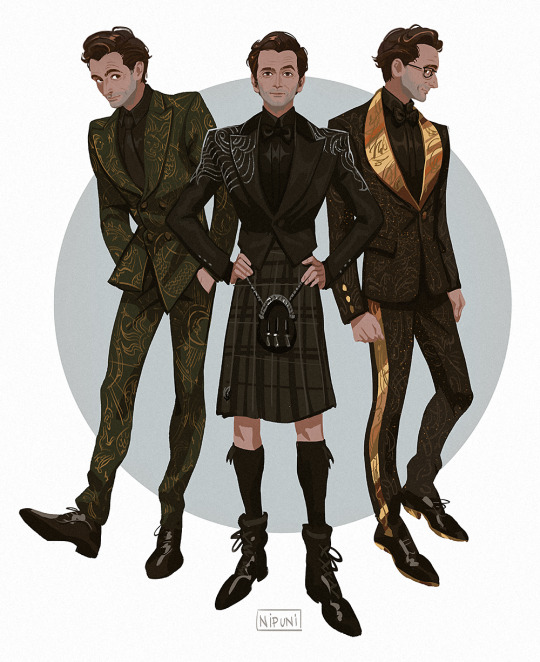
David's BAFTA looks 🥰
#david tennant#bafta 2024#my art#the kilt one awoke something in me sorry I had to draw it#Nicolas is on a work trip to Berlin for a few days this is how I'm coping
21K notes
·
View notes
Text
Trying to explain what the fuck just happened in Lankan politics today.
The leftist party has won 159 seats out of 218 in the Parliamentary elections. The single biggest landslide win since we broke from the British and achieved universal franchise in 1948.
Any party achieving a super majority in the executive and legislative is, objectively speaking, bad. It disables checks and balances, which is a catastrophic thing for any democracy, and the only two other times it's happened for us has irrevocably eroded the fabric of civic rights and democratic freedom. Also, the reason the NPP won the North and East is that the colonized, genocided and subjugated people there have no faith in electoralism anymore. The way this government has engaged minority issues has been utterly abysmal and now they've been rewarded for it.
On the other hand:
The winners. Are all. Grassroots. Candidates.¹
We have voted out every single career criminal that's been barnacled into the Lankan political arena since before I've been alive. The fascist party has only three seats.² The other fascists didn't win a single seat. The neoliberal legacy party won none. There are only forty people in Parliament that represent any sort of dynastic political legacy. After 76 solid years of nothing but political dynasties.
This is barely five years after the Rajapaksas swept in and absolutely glutted the Parliament with their family members and cronies end to end.
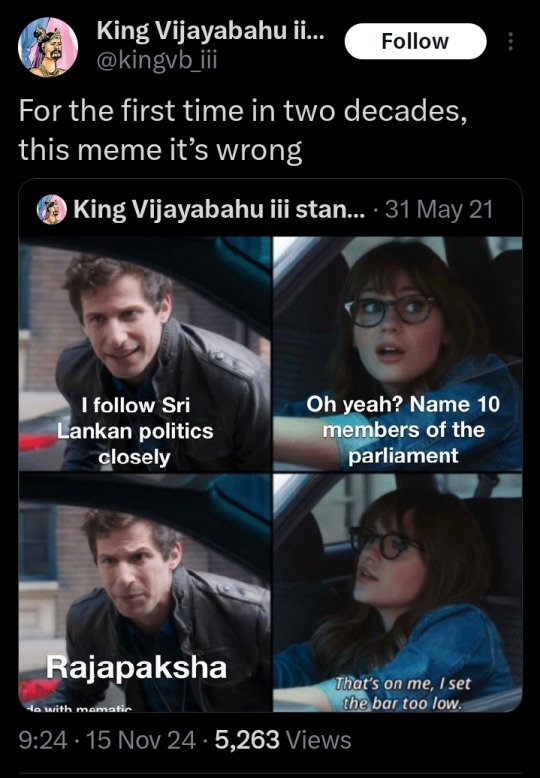

This is the illegitimate interim government we had for most of the last 18 months. We literally, physically, chased the Rajapaksas out of the country and this fucking demon set up a puppet government just so he could finally sit in that goddamn chair and be the despot he'd always dreamed of in exchange for letting them all come back. He's now gone. His entire circle is gone.
THEY ARE ALL FUCKING GONE.
In US terms, just imagine that, five years from now, when Trump's GOP has control of everything, the entire GOP and the worst of the Dems are all purged from Congress and Senate, the Green Party in control of all three branches of government under a pro-union left-wing President and an unmarried female LGBT rights activist Vice President, and the Dems reduced to barely 20% of the House.

This is my anthropology professor. She joined politics from the small nascent leftist coalition to help keep the government accountable. She's now the Prime Minister and the most popular Parliamentary candidate in the nation's history. (Edit: She was knocked off first place by a dude in the final result. Boo.)
(On the other hand— the woman who helped make me a radical anarchist and literally helped write a book on political dissent and resistance...now is the state. Uh.)
But there are so many women in Parliament! We had the lowest female representation in a South Asian Parliament and some of them were from the list of seats reserved for parties rather than elected ones. Most were either anti-feminist conservative embarrassments, widows and daughters of elite politicians and neoliberal shills. It's still only an increase of a few percentage points (Edit: from the previous 5% to 10% in the final result!) but now we have elected academics, feminist advocates, activists! There Is a representative for Malaiyaha Tamils in the Central Province for the first time in history and it's a young woman! (Edit: now it's two female Malaiyaha MPS!!) This is the plantation community that still live in conditions closest to the slavery the British forced upon them two hundred years ago!
I'm like. Completely mindfucked. To be very very clear, the NPP coalition formed around the nucleus of the JVP that used to be communist but haven't been in 30 years, they're now just social democrats who are left of places like the US and UK, whose "left" is now center-right. They're only threatening to the Western mainstream media for some reason who can't stop bleating about how we have a "Marxist" government now. In reality, the actual chances for radical reform are still quite low, and the opportunity for further erosion is quite high with a super majority government regardless of affiliation.
On the other hand:
What the fuck.
Sometimes living through historical events is really damn amazing.
---
¹ Well, nearly. There are a few career politicians and a nepo baby but they aren't so bad either.
² Goddamn it, Baby Rajapaksa and Sri Lanka's answer to JD Vance have wormed their way in using the list of Constitutionally reserved party seats for non-elected members. FUCK the National List.
#five years ago i was working a news desk watching a band of violent ethnofascists known for genocide torture kidnappings and murder sweep in#and take control of the entire country#on the heels of the worst terrorist attack we've suffered that they orchestrated for this purpose#wondering how many of our colleagues would be safe#and watching the people that opposed them flee the country#i cannot tell you the enraging hopeless terror#and now#they're all gone#THEY'RE FUCKING GONE#sri lanka politics#sri lanka news#sri lanka protests#sri lankan parliamentary elections#sri lanka election 2024#anura kumara dissanayake#harini amarasuriya#feminism#leftism#world news#faith in humanity#power to the people#aragalaya#knee of huss#අරගලයට ජය!#අරගලයට ජය
3K notes
·
View notes